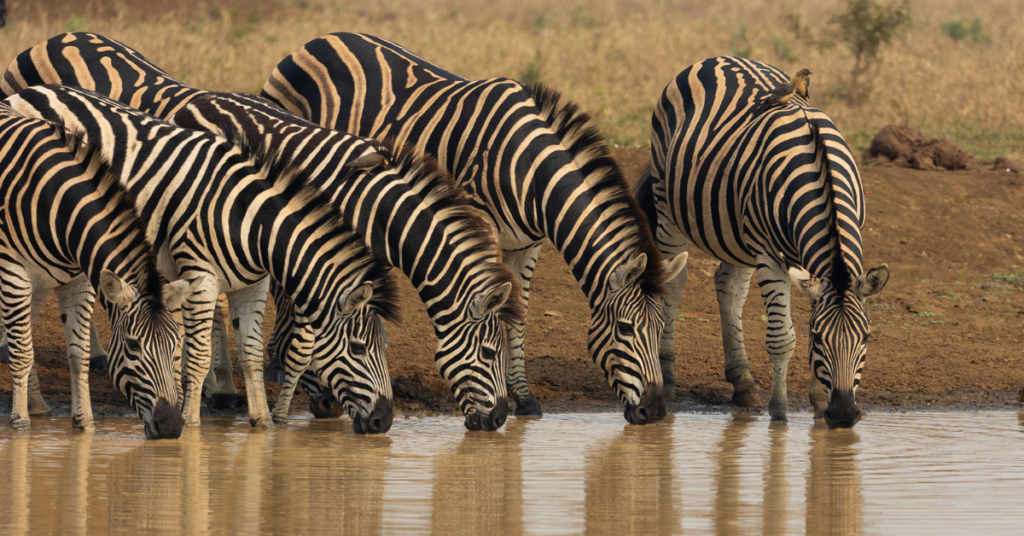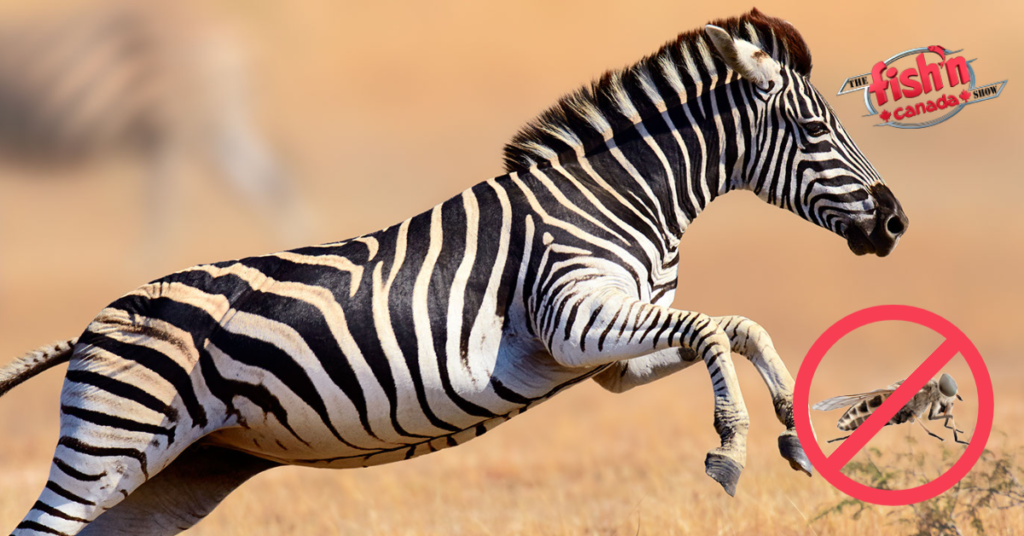Scientists may have unraveled the enigma of why zebras have stripes: the distinctive pattern seems to baffle flies, deterring them from landing for a swift snack.
The research, incorporated zebras, horses, and horses garbed as zebras. The researchers stated that the study not only corroborated earlier theories that stripes could serve as a bug repellent, but also shed light on the mechanism, demonstrating that the patterns only had an impact when the flies were in close proximity.
“The flies seemed to be behaving relatively naturally around both [zebras and horses], until it comes to landing” said Dr. Martin How, co-author of the study from the University of Bristol.
“We saw that these horseflies were coming in quite fast and almost turning away or sometimes even colliding with the zebra, rather than doing a nice, controlled flight.”
By spending over 16 hours observing interactions between horseflies and nine horses, as well as three zebras (one of which was humorously named Spot), researchers made a noteworthy discovery.
The inquiry focused on the purpose of zebra stripes. Contrary to common belief, these stripes are not purely black and white.
While horseflies showed similar levels of circling or touching behavior towards both horses and zebras, a significant difference emerged when it came to landing. Zebras experienced a lower landing rate compared to horses.
To ensure the effect was not due to any distinct smell emanating from zebras and horses, the researchers conducted an experiment. They dressed seven horses in turn with black, white, and zebra-striped coats. Interestingly, there was no variance in the landing rate on the horses’ exposed heads. However, the flies touched and landed on the zebra coat far less frequently than on either the black or white garments.
Further insights were gathered through video recordings of zebras and a smaller group of horses. These recordings revealed that when zooming towards zebras, the flies did not slow down steadily as they did with horses. Instead, they often collided with the animals.
The researchers concluded that zebra stripes do not act as a long-range deterrent. Rather, their impact becomes apparent when the flies get up close, possibly due to the flies’ low-resolution vision.
“From distances of greater than two metres or so, a zebra would just look like a grey horse – they won’t be able to see the stripes at all,” said How.
He stated that the probable ways in which the deterrent effect occurs are either due to the “sudden reveal” of the stripes when insects approach closely, which surprises them and causes them to change their course, or it disrupts their perception of the speed at which objects pass by, consequently affecting their ability to land.
According to the team, the findings provided support for the hypothesis that stripes might have developed as a response to biting flies.

The study suggests that Zebra stripes evolved as a defence mechanism against biting flies.
“Zebra – evolutionarily speaking – have developed in parts of the world where flies carry pretty nasty diseases and so there can be some very big fitness consequences to being bitten by flies. Whereas domestic horses haven’t had the same sort of driving force,” said How.
Nevertheless, he emphasized that the explanation may not be entirely complete. In the past, researchers have proposed various possibilities for the purpose of the stripes, such as camouflage, aiding thermoregulation, or serving a social function. Although How acknowledged that there is some supporting evidence for the social function theory, he highlighted that lions, for instance, do not appear to be perplexed by stripes. “Zebra are preferential prey for a lot of predators, so it is not really stopping [them],” he stated.
Having said that, How observed that the most recent experiment had been conducted in Somerset instead of amidst the biting flies of Africa. Furthermore, there were other constraints to consider, such as the fact that the flies’ movement could only be observed in two dimensions through video recordings, and the horse coats were constructed using various materials.
So, take a page from the zebra’s book and wear patterned tops to fend off horseflies!








